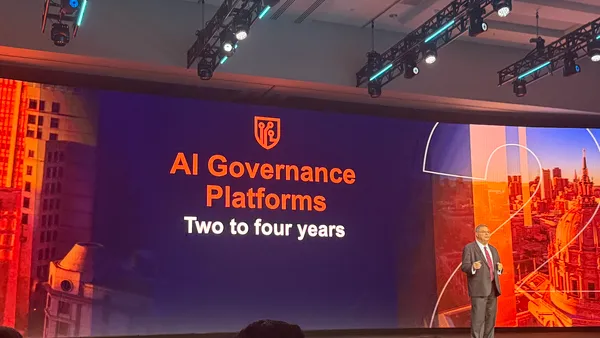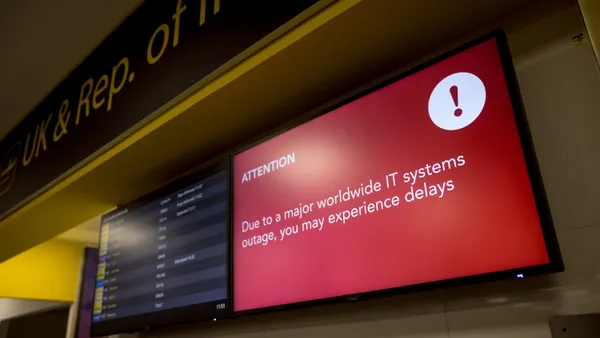In the global shift to work from home, not all companies are created equal.
"There is a 'haves and haves-not story here," said Leon Adato, head geek at SolarWinds, in an interview with CIO Dive. Technology infrastructure largely shaped how companies adapted to their new normal.
For some companies, stay-at-home orders are a minor disruption. Their workforces were already primed to operate remotely; workers simply took their laptop home and hunkered down to weather the pandemic.
But for others, empty headquarters and an indefinitely home-bound workforce spells trouble, especially in ensuring employees have access to the devices that make companies run.
As millions work from home for an undetermined period of time, access to hardware can impact efficiency. This is especially true for software engineers and knowledge workers, whose work stations often include additional monitors.
For software maker SAP, an in-house tool recently proved its worth.
The Ariba platform, acquired by the SAP in 2012, lets employees order equipment like external monitors — paid for by SAP — and get them delivered. This helps workers "establish some normalcy in their daily work during this new normal," said Lloyd Adams, SVP and managing director, East Region at SAP America, in an email.
IT teams at SAP have made themselves available to address any IT challenges employees run across, such as enabling VPN access and using video conferencing tools, said Adams.
Gartner analysts say there is a temporary increase in demand for laptops as the world skews more digital, but the supply chain faces challenges as China recovers from the COVID-19 lull.
It's uncertain if these companies will be able get enough laptops on time to power their workforce, as the PC supply is delayed due to the supply chain disruption, said Mika Kitagawa, senior principal analyst at Gartner, in an email to CIO Dive.
"Some companies are providing employees with accessories such as external monitors for productivity gain," Kitagawa said. "It's possible they're also offering a few more laptops to those who normally work in an office, but are now at home."
It's unlikely the majority of IT managers had a large enough stockpile of devices to imagine everything breaking down at once, said Adato. Stockpiling large amounts of equipment doesn't make a lot of sense, in the pre-pandemic era of two-day shipping on anything.
"What we've heard from the field and in our IT teams' experience, there's a premium of desktops and laptops as everybody's scrambling to work from home," said Anand Rajaram, head of product, support solutions at LogMeIn, in an interview with CIO Dive. "Back-orders are anywhere from four to six weeks so IT teams are having to make do."
The pandemic days ahead bring other tech challenges along, like needing to perform IT support remotely.
Existing tools such as remote access software can lower the friction in that process, but they wont help much with hardware-related issues. No software currently exists to help with a cracked screen or busted charger. IT managers will need to monitor their ability to access parts and equipments.
Transformation is taking place at unplanned speeds for companies reacting to the pandemic in real time. Migrations are "coming out in sometimes unhealthy ways because people are doing it through sheer panic," said Adato. "In IT, the worse decisions are made in that position."













